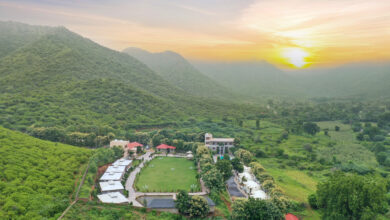Winter Chardham Yatra Package: Embracing the Sacred in Solitude
The Chardham Yatra, a revered pilgrimage for millions of Hindus, typically includes the holy sites of Yamunotri, Gangotri, Kedarnath, and Badrinath. While the summer months witness a surge of pilgrims, the winter season offers a unique and serene experience for those willing to brave the cold. In this comprehensive guide, we will explore the winter Chardham Yatra package, its significance, travel itineraries, essential tips, and the spiritual rewards of this sacred journey.
Understanding the Winter Chardham Yatra
Significance of Winter Pilgrimage
Winter transforms the landscape of the Chardham region, blanketing it in snow and creating a serene and tranquil atmosphere. The winter Chardham Yatra holds immense spiritual significance, as it allows devotees to connect deeply with their faith amidst the pristine beauty of the Himalayas. While the main temples remain closed, many pilgrims undertake the journey to seek blessings at the alternate winter shrines.
- Kedarnath: The Kedarnath temple is closed from late October to early November, but devotees can visit the nearby village of Guptkashi, where the idol is taken during the winter months.
- Badrinath: Similarly, Badrinath Temple closes for the winter, and devotees can visit the temple in Joshimath, where the deity is worshiped until the reopening in spring.
- Yamunotri and Gangotri: While the main temples are closed, the regions surrounding these sites still attract pilgrims who seek solace in the mountains and the sacred rivers.
Why Choose Winter?
Choosing the winter months for your Chardham pilgrimage provides a different experience than the bustling summer season. The benefits include:
- Less Crowded: With fewer pilgrims, you can enjoy a more personal and intimate experience.
- Breathtaking Landscapes: Snow-capped mountains and serene valleys create a picturesque backdrop for spiritual reflection.
- Cultural Immersion: Winter traditions, local festivals, and rituals are unique and provide a deeper understanding of the local culture.
Planning Your Winter Chardham Yatra Package
Choosing the Right Package
A winter Chardham Yatra package typically includes transportation, accommodations, meals, and guided tours. Various travel agencies offer packages tailored to meet the needs of different travelers. When choosing a package, consider the following factors:
- Duration: Packages usually range from 7 to 12 days, depending on the itinerary and destinations included.
- Inclusions: Ensure that the package covers essential services such as transportation, accommodations, meals, and experienced guides.
- Customization: Look for agencies that allow customization of the itinerary to suit your preferences.
- Budget: Packages vary widely in price, so choose one that fits your budget while ensuring quality service.
Sample Winter Chardham Yatra Itinerary
Here’s a suggested itinerary for a 10-day winter Chardham Yatra package:
Day 1: Arrival in Dehradun
- Arrive at Jolly Grant Airport, Dehradun.
- Transfer to your hotel and rest after your journey.
- Evening: Explore local attractions like Robber’s Cave or Sahastradhara.
Day 2: Dehradun to Haridwar
- Drive to Haridwar (approximately 1 hour).
- Visit Har Ki Pauri and participate in the evening Ganga Aarti.
- Overnight stay in Haridwar.
Day 3: Haridwar to Guptkashi
- Depart early for Guptkashi (around 8-9 hours by road).
- Enjoy scenic views along the route.
- Evening: Explore Guptkashi and visit the ancient Vishwanath Temple.
- Overnight stay in Guptkashi.
Day 4: Guptkashi to Kedarnath
- Morning: Drive to Gaurikund (around 30 minutes).
- Begin the trek to Kedarnath (16 km).
- Visit the Kedarnath Temple and perform rituals.
- Overnight stay in Kedarnath (at guesthouses or camps).
Day 5: Kedarnath to Guptkashi
- Morning: Attend prayers at Kedarnath Temple.
- Trek back to Gaurikund and drive to Guptkashi.
- Relax and enjoy the beautiful surroundings.
- Overnight stay in Guptkashi.
Day 6: Guptkashi to Joshimath
- Depart for Joshimath (approximately 8 hours by road).
- Visit local attractions like the Narsingh Temple.
- Overnight stay in Joshimath.
Day 7: Joshimath to Badrinath
- Drive to Badrinath (around 1.5 hours).
- Visit the Badrinath Temple and participate in rituals.
- Explore nearby Mana Village, the last Indian village before Tibet.
- Overnight stay in Badrinath.
Day 8: Badrinath to Haridwar
- Depart for Haridwar (approximately 10 hours).
- Evening: Relax and enjoy the local ambiance.
- Overnight stay in Haridwar.
Day 9: Haridwar to Dehradun
- Return to Dehradun (1 hour).
- Visit local attractions or shop for souvenirs.
- Overnight stay in Dehradun.
Day 10: Departure from Dehradun
- Depending on your travel schedule, enjoy some last-minute sightseeing or relaxation.
- Depart for your onward journey from Jolly Grant Airport.
Essential Tips for Winter Chardham Yatra
Health and Safety
- Acclimatization: Spend time acclimatizing to the altitude, especially in locations like Kedarnath and Badrinath.
- Stay Hydrated: Drink plenty of water to avoid dehydration in the dry winter air.
- Dress Appropriately: Wear warm, layered clothing, including thermal wear, jackets, gloves, and sturdy footwear.
- Medicines: Carry a first-aid kit with essential medications, including those for altitude sickness.
Local Culture and Etiquette
- Respect Traditions: Be aware of local customs and practices, especially when visiting temples.
- Photography: While photography is usually allowed, respect signs indicating where it is prohibited, particularly in sacred spaces.
- Language: Hindi is widely spoken, but learning a few local phrases can enhance your interactions.
Transportation
- Travel Insurance: Consider purchasing travel insurance that covers medical emergencies, trip cancellations, and other unexpected events.
- Local Transport: Use reliable local transport options for safety, especially during treks or challenging weather conditions.
Spiritual Insights
Embracing Solitude
The winter Chardham Yatra offers a chance for deep reflection and solitude. As you journey through the serene landscapes, take the time to meditate, connect with nature, and engage in personal spiritual practices. The calmness of the mountains during winter can lead to profound insights and personal growth.
Engaging with Local Communities
The local communities in the Chardham region often celebrate winter festivals and rituals. Engage with them to learn about their traditions, customs, and the significance of their practices. This interaction can provide a richer understanding of the spiritual landscape of the region.
Sacred Rituals
Participate in the morning and evening rituals at the temples. The sound of bells, chanting of mantras, and the sight of flickering lamps create an atmosphere that enhances the spiritual experience. Offering prayers, lighting lamps, and immersing yourself in the rituals can deepen your connection to the divine.
Conclusion
The winter Chardham Yatra is an extraordinary journey that offers spiritual fulfillment amidst the breathtaking beauty of the Himalayas. As you traverse through the snow-capped peaks and tranquil valleys, you embark on a pilgrimage that is as much about self-discovery as it is about devotion. The solitude of winter provides a unique opportunity to connect with your inner self, away from the hustle and bustle of daily life.
Whether you seek divine blessings, personal transformation, or simply a respite in nature, the winter Chardham Yatra promises to be an unforgettable experience. So, pack your bags, prepare your heart, and get ready for a spiritual journey that will resonate in your soul long after the trip is over. Embrace the serenity, reflect on your path, and let the Himalayas guide you on this sacred pilgrimage.



